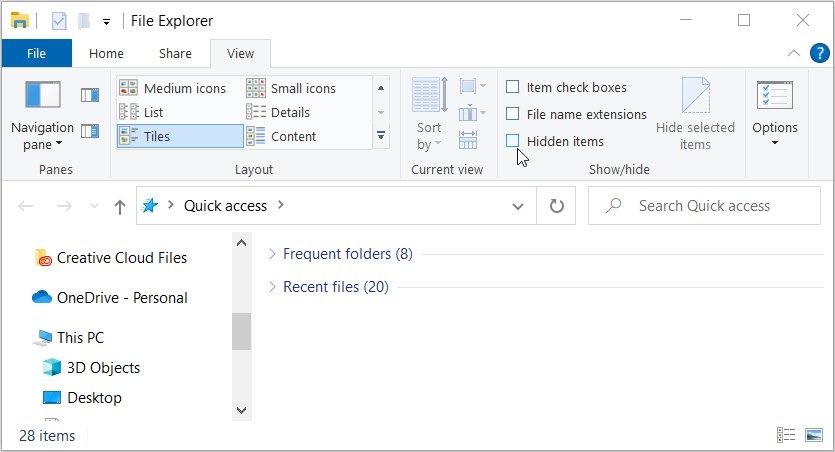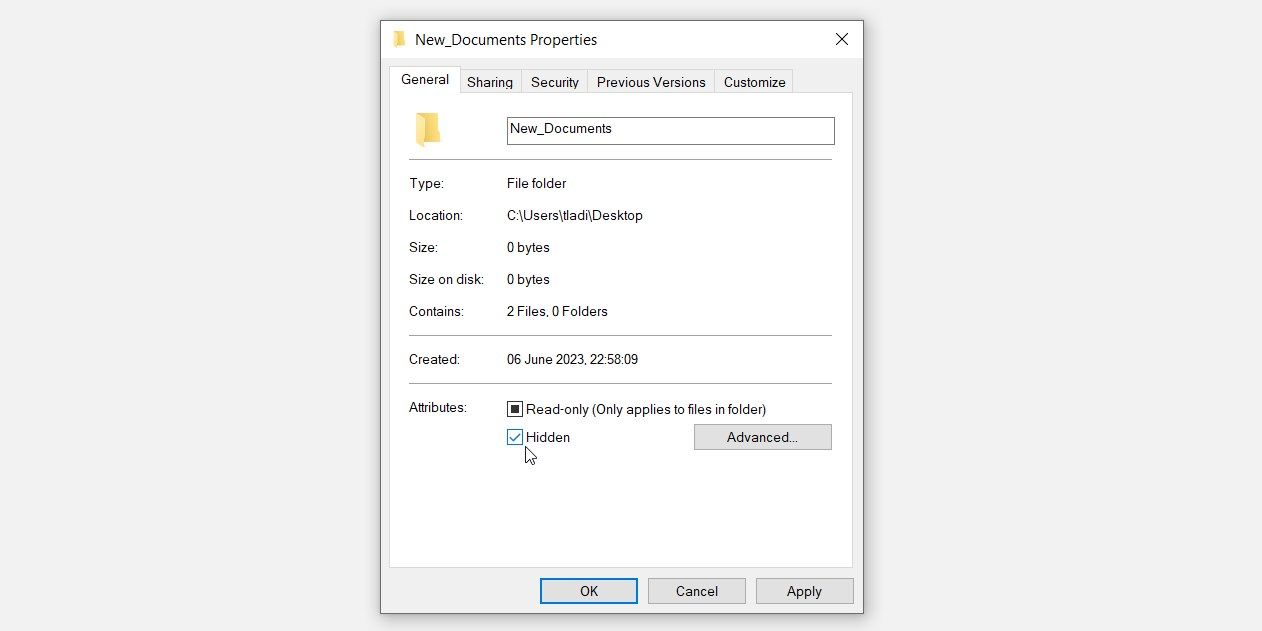Within the depths of our computer’s file system, there exists a seemingly inconspicuous file called “desktop.ini.” Although it’s often unnoticed, the desktop.ini file plays a crucial role in personalizing and configuring folder settings on Windows.
But what exactly is the desktop.ini file, and should you hide it? Is it worth deleting this file from your PC? We’ll explore the significance of desktop.ini files and shed light on why it might often be worth hiding them.
What Are Desktop.ini Files, and Why Are They Important?
Desktop.ini files simply refer to one of the hidden configuration files of a Windows device. If these files appear on your PC, then it means you have allowed your system to display hidden files and folders.
So, why are these files important?
The desktop.ini files define how a folder should behave and be displayed. They’re created when specific changes are made to a folder, such as giving it a custom icon or configuring specific file-sharing settings.
Desktop.ini files are plain text files that you can edit using a text editor like Notepad. However, be careful when modifying them because incorrect changes could lead to folder display issues and other errors.
Potential Issues That Can Be Caused By Visible Desktop.ini Files
Here are a few potential problems that can be caused by visible desktop.ini files:
- Cluttered Desktop: If desktop.ini files are visible on your PC, then they’ll contribute to visual clutter on your desktop and within folders. This can make it difficult for you to navigate and locate files and folders. So, it means hiding the desktop.ini files could be one of the best ways to clean up your Windows desktop.
- Accidental Deletion or Modification: Since desktop.ini files are plain text files, there’s a high chance that you might accidentally delete or modify them. And when this happens, you might encounter unexpected changes in folder appearance or behavior. This means once the files are deleted, you’d have to customize your folders again if you want to restore their appearance.
- Misinterpretation as Malware: If you’re unfamiliar with desktop.ini files, you might often mistake them for malicious files. This could lead to unnecessary concern or confusion.
To mitigate all the issues we’ve covered, your Windows device will automatically hide the desktop.ini files. But there are instances where these files might be appearing on your PC.
By now, it’s clear that hiding these files leads to a cleaner and more organized desktop—making it easier to locate files and folders. Also, hiding these files ensures that you don’t accidentally remove them and other important system files.
So, let’s now go ahead and see how you can conceal these files.
How to Hide Desktop.ini Files
Here’s how you can easily hide the desktop.ini files on your PC:
- Press Win + E to open File Explorer. Alternatively, check out the various ways to open the Windows File Explorer.
- Click on the View tab in the top-left corner.
- Navigate to the Show/hide section and uncheck the Hidden items box. This will ensure that your PC doesn’t display hidden files and folders, including desktop.ini files.
But what if you want to display some hidden files and folders except the desktop.ini files?
We’ve got you covered! Here are the steps you need to follow:
- Open File Explorer and navigate to the View tab as per the previous steps.
- Check the Hidden items box. This will display all hidden files and folders.
- To hide desktop.ini files only, navigate to the location where you want to hide the files (such as your desktop or a specific folder).
- Right-click on the target folder and select Properties from the context menu.
- Navigate to the General tab.
- Scroll down to the Attributes section and check the Hidden box. This will hide a desktop.ini file and other configuration files of that specific folder.
Finally, click Apply and then click OK. The desktop.ini files will now be hidden in the specified location.
Is It Worth Deleting the Desktop.ini Files?
Ideally, it’s not advisable to delete desktop.ini files. Well, you can delete them only if you have a specific reason to do so and understand the potential consequences.
Here are a few considerations to help you decide whether deleting desktop.ini files is worth it or not:
- Inconsistent Folder Appearance: Deleting desktop.ini files can result in inconsistent folder appearances across different systems or user accounts. If you share your folders or move them to different computers, the customized settings stored in desktop.ini files will be missing. This means the shared or moved folders may look different or have different behaviors than intended.
- Loss of Customization: Desktop.ini files store customized settings for folders, such as custom icons and other visual or behavioral modifications. If you delete the desktop.ini files, you’ll lose these customizations, and the folders may revert to their default appearance or behavior.
- System Stability: Desktop.ini files are some of the crucial system files contained on your device. Deleting or making unintended changes to them could potentially lead to system instability or performance issues.
- Difficulty in Reverting Changes: Once you’ve deleted the desktop.ini files, it can be difficult to restore your original customizations without manual intervention. If you want to revert to the previous folder behavior or appearance, you’d need to recreate the desktop.ini file and reapply the desired settings manually. But that’s quite a difficult task, unless you’ve worked with desktop.ini files before.
Now, if you find that desktop.ini files cause issues or conflicts, then deleting them might just be worth it. Or, you could also delete them if you no longer want the customizations they provide. But before you proceed, just be careful and ensure that you back up your device first.
Desktop.ini: One of the Most Important Configuration Files on Your PC
The desktop.ini files are hidden by default to provide a cleaner and more user-friendly experience. Advanced users may often choose to display and edit these files for specific customization purposes. But if you’re unfamiliar with desktop.ini files, then hiding them is ideally the best solution.
We’ve explored these files in detail, including the drawbacks of displaying them on your device. And to make your life easier, we’ve shown you how to hide them.
#Desktop.ini #Files #Worth #Hiding



Comments